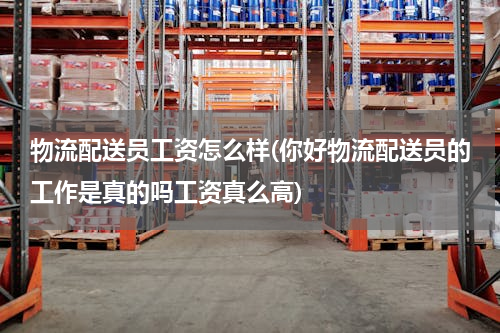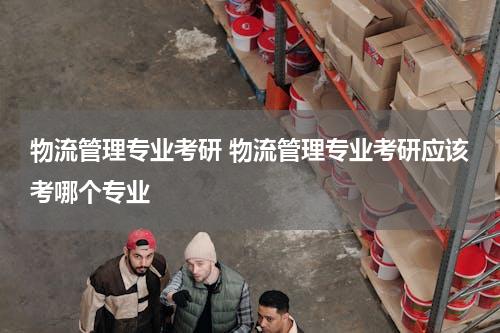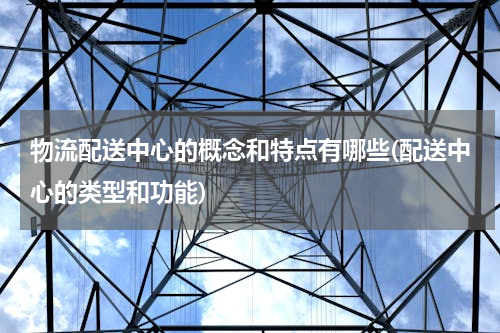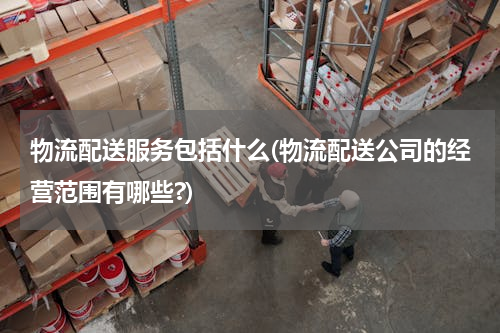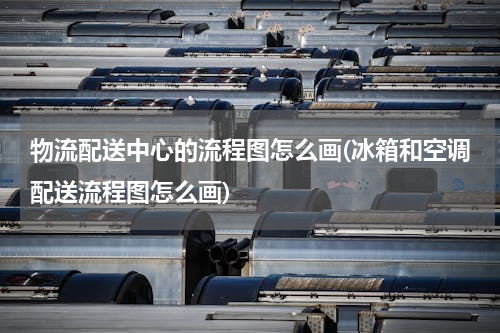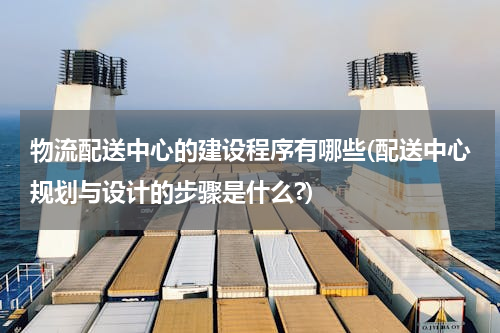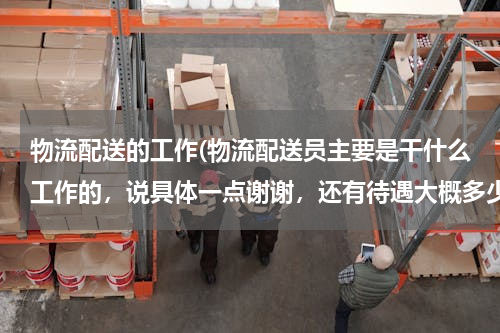目前,电子商务已在世界各国迅速普及,在现代企业财务管理中发挥着越来越重要的作用。电子商务能支持企业解决信息短缺问题,使企业与供应链、与社会各有关部门及企业内部各部门进行有效协同。但是,由于电子商务的结算方式以电子货币为主,不再是传统交易中的现金和支票、汇票、本票等,一旦企业获取信息、作出判断稍有差错,投资的风险性将立即出现,严重的可顷刻导致企业破产。然而,电子商务的出现使这一目标管理有了很大改变。
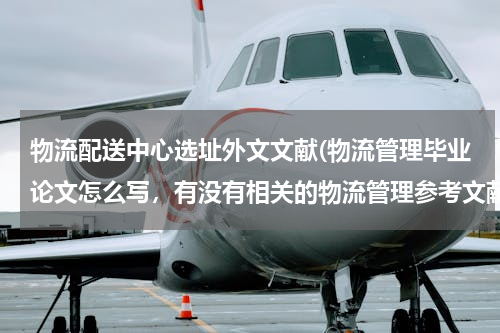
电子商务对财务管理的影响研究外文文献有哪些
电子商务是综合运用信息技术,以提高贸易伙伴间商业运作效率为目标,将交易全过程中的数据和资料用电子方式实现,在商业的整个运作过程中实现交易无纸化和直接化的一种全新的商务运作方式。目前,电子商务已在世界各国迅速普及,在现代企业财务管理中发挥着越来越重要的作用。但是,电子商务的迅猛发展在为企业加强财务管理提供了广阔的空间和可能的同时,也对现有企业财务管理的环境、理论、方法产生了极大的冲击与挑战。因此,我们有必要就电子商务对现有企业财务管理产生的影响及企业财务管理由此而发生的变化与发展进行探讨和研究。一、电子商务的特性(一)国际化由于lnternet的开放性特征,决定了基于Internet的电子商务具有一定的开放性,是超越国界的国际化商务活动。对消费者来说,只要拥有一台联网计算机和信用卡,就能够成为国际化消费者;对企业而言,电子商务带来的是便捷、低成本的全球市场介入和最小化不对称的信息获取,这样使得全球的企业,不管其规模是大是小,都拥有了参与电子商务的均等机会。(二)数字化电子商务不论从物质基础Internet,还是从商务活动中的信息发布、信息交换、交易方式、信息存储直至非货币化交易,其信息的传播途径和获取、加工、存储等环节都具有数字化的特征。(三)虚拟化在电子商务环境下,交易活动是在互联网络上进行的,一方面,交易双方不需见面,在交易双方的脑海中对方的印象是抽象的、模糊的;另一方面,经营主体十分灵活,存续时间可长可短,可以随业务活动的开展而随时成立,随业务活动的终了而作调整或解散,也可以是网上的“虚拟公司”。二、电子商务对企业财务管理的影响(一)对企业财务管理对象的影响现有企业财务管理的对象一般是指一个独立核算单位资金运动的实体,是对以物质变换活动为特征的实体运动的管理。而在电子商务时代,企业有时不表现为具体的实物形态,没有严格的企业边界,当市场机遇存在时它才存在,因而它们不具备现有财务管理对象的特征,这是因为企业受信息技术变革的影响,在产业结构、生产方式,乃至生活方式等方面都产生了重大变化。企业的经营越来越多地依赖客户、供应商和行业经济、区域经济甚至是全球经济的变化。因此,在电子商务时代,信息活动所创造的价值在企业生产产品或提供服务中的比重日趋上升,此时的企业产品技术含量提高,企业管理活动地集中在对信息资源和信息活动的管理上,因而企业财务管理对象不再是“资金运动实体”,而应是“经济信息体”。(二)对企业筹资管理的影响电子商务时代的一般企业可能仍需在最佳资本结构或适度负债理论指导下,通过主权资本、负债资本筹措满足自身生产经营需求的资金,而电子商务的主要参与者是网络企业或者虚拟企业,由于它的参与者和发生交易地点的模糊性以及采用电子货币结算的匿名性,使税务机关的税收征管工作没有了确切依据,由此使得电子商务的参与者避、逃税很容易成为现实。在这种情况下,负债经营可能给企业带来的合理避税效应显然减弱,现有的筹资理论受到了冲击。(三)对企业投资管理的影响由于电子商务时代已实行电子联机实时报告,商品的最新市场价格和有价证券行情随时可以从网络中获得,因此企业投资所需的信息在任何时候都有可能发生和及时得到,同时又由于电子商务交易不受时间与空间限制,企业无论身处何地、规模大小,无论是同城还是异地、国内还是国外,它们的交易都相差无几,这大大降低了企业采购、生产、销售的成本,也使得一些企业在、更快捷地获得收益的同时,遭遇了更大的风险。电子商务能支持企业解决信息短缺问题,使企业与供应链、与社会各有关部门及企业内部各部门进行有效协同。因此,企业可以随时获得进行某项投资决策所需的一切信息,使投资失误极少出现;可以随时获得进行存货购进、储备与出售的最佳时机与最佳批量信息;可以随时获得占用应收账款客户的资信情况,并迅速制订与调整信用政策及收账政策,把坏账损失减低到最低点;可以获得在线证券投资的一切可能信息,使短期有价证券与现金的转换能在最佳状态进行,并使短期投资收益出现企业所期望的态势;可以获取信息进行最新产品的生产;可以在网上进行知识产权销售及有偿咨询;可以不失时机地与其它企业迅速组成网上联合体———虚拟企业,抓住一切可以给企业带来利益的市场机遇及时交易,使企业迅速收回资金。但是,由于电子商务的结算方式以电子货币为主,不再是传统交易中的现金和支票、汇票、本票等,一旦企业获取信息、作出判断稍有差错,投资的风险性将立即出现,严重的可顷刻导致企业破产。(四)对企业财务管理目标的影响在电子商务时代,产品科技含量提高,企业对员工及管理人员的素质要求随之提高,致使企业智力资本比重加大。同时,由于此时企业对客户的需求、新产品的开发研究、市场有率,对与供应链、与社会各部门的协同等信息更加关注,因此,此时的财务目标应更加呈现多元化及财务责任社会化,不再是现在讨论的价值最大化、利润最大化等,企业的财务目标不仅要考虑资本所有者的资本增值最大化、债务人的偿债能力最大化、政府的社会经济贡献最大化、社会公众的社会经济责任和绩效最大化的财务要求,更要考虑人力资本所有者(经营者和员工)的薪金收入最大化和参与税后利润分配的财务要求。(五)对企业现金管理的影响现金是企业中流动性最强的资产,企业必须拥有一定的现金流量以确保日常现金的支付性、预防性及一定程度上的短期投资需要,但现金不能长久地处于不盈利的货币状态,否则势必影响企业的经济效益。而且,现金日常管理的主要任务就是要在确保现金流动性的前提下,力争将现金的持有水平控制在尽可能低的水平。西方企业的理财者在此方面做了大量的有益尝试,并形成了一系列传统的现金管理方法。然而,电子商务的出现使这一目标管理有了很大改变。 .采用电子付款方式将大大减少企业对于现金浮存的利用与管理。 .电子商务提高了企业日常现金的调度能力。 .电子商务降低了资金的流转成本。 .电子商务缩短了现金流转周期,从总体上提高了现金流转效率。三、电子商务的局限性以网络作为交易平台赚取利润的“电子商务”模式的出现,可以集商流、物流、信息流、资金流为一体,是对企业财务管理的革命性变革,为企业、为客户、为社会都创造了价值。但是,由于电子商务刚刚兴起,目前尚处于成长期,而且由于电子商务本身所具有的独特性,仍然存在一定的局限性,具体表现在以下三个方面。(一)可能需要巨大的投入成本开展电子商务并非仅仅建立一个网络交易平台就能够完成全部工作,而可能需要有强大的物流配送系统作为保证,特别是诸如BtoC类型电子商务,虽然通过网络交易可以节约交易成本,但是物流系统的构建无疑增加了电子商务的运作成本。如,亚马逊网上书店在美国建立了 个大型的物流配送中心用来储藏图书和配送图书。(二)需要一定数额的网络交易为保证由于网络销售的毛利率相对较低,因此,为了维持电子商务网站的正常运转,必须要有一定量的交易数额作为保证。这一点对于刚刚建立的网站更为重要,由于网站建立伊始,客户对网站的了解甚少,因此网络企业为维持盈利,其工作重点就必须放在如何获取客户资源上。据推算,一个月运营成本在 万元左右的中心购物网站,如果月交易额在 万元以下将无法盈利。(三)网络的安全性问题在商品交易过程中,资金流的运转可以在进行网络交易的同时在网上完成,因此,客户对网络的安全性相当关注和重视。由于TCP/IP的开放性,使网上电子商务面临窃听、篡改和欺骗的威胁,因此,电子商务企业应当加强网络安全性建设的力度,主要方法是通过SSL(SecureSocketLayer)和电子签字技术。“电子商务”模式虽然目前存在一些相应的缺陷,但是电子商务网站运作过程正在处于不断完善之中,随着信息技术的突飞猛进以及电子商务越来越受到人们的关注和重视,通过网络盈利将成为越来越多企业的首要选择。求物流外文文献
Transport or transportation is the movement of people and goods from one location to another. Transport is performed by various modes, such as air, rail, road, water, cable, pipeline and space. The field can be divided into infrastructure, vehicles, and operations.Infrastructure consists of the fixed installations necessary for transport, and may be roads, railways, airways, waterways, canals and pipelines, and terminals such as airports, railway stations, bus stations, wharehouses, trucking terminals, refueling depots (including fueling docks and fuel stations) and seaports. Terminals may both be used for interchange of passengers and cargo, and for maintenance.
Vehicles traveling on these networks include vehicles of appropriate types such as automobiles, bicycles, buses, trains, trucks people, helocopters and aircraft. Operations deal with the way the vehicles are operated, and the procedures set for this purpose including financing, legalities and policies. In the transport industry, operations and ownership of infrastructure can be either public or private, depending on the country and mode.
Passenger transport may be public, where operators provide scheduled services, or private. Freight transport has become focused on containerization, although bulk transport is used for large volumes of durable items. Transport plays an important part in economic growth and globalization, but has a deteriorizing impact on the environment. While it is heavily subsidized by governments, good planning of transport is essential to make traffic flow, and restrain urban sprawl.
Mode
Main article: Mode of transport
A mode of transport is a technological solution that used a fundamentally different vehicle, infrastructure and operations. The transport of a person or cargo may be by one or more modes, the latter called intermodal transport. Each mode has its advantages and disadvantages, and will be chosen for a trip depended on the nature of the purpose, cargo and destination. While there transport in air and on water has their own mode, land transport has several modes.
Human-powered transport remains common in developing countries
[edit] Human-powered
Main article: Human-powered transport
Human-powered transport is the transport of person(s) and/or goods using human muscle-power. Like animal-powered transport, human-powered transport has existed since time immemorial in the form of walking, running and swimming. Modern technology has allowed machines to enhance human-power. Many forms of human-powered transport remain popular for reasons of cost-saving, leisure, physical exercise and environmentalism. Human-powered transport is sometimes the only type available, especially in underdeveloped or inaccessible regions. It is considered an ideal form of sustainable transportation.
Although humans are able to walk without infrastructure, the transport can be enhanced through the use of roads, especially when enforcing the human power with vehicles, such as bicycles and inline skates. Human-powered vehicles have also been developed for highly encumbering environments, such as snow and water, by watercraft rowings and skiing; even the air can be entered with human-powered aircraft.
[edit] Animal-powered
Main article: Animal-powered transport
Animal-powered transport is the use of working animals for the movement of people and goods. Humans may ride some of the animals directly, use them as pack animals for carrying goods, or harness them, alone or in teams, to pull sleds or wheeled vehicles. Animals are superior to people in their speed, endurance and carrying capacity; prior to the Industrial Revolution they were used for all land transport impracticable for people, and they remain an important mode of transport in less developed areas of the world.
[edit] Air
Main article: Aviation
Scandinavian Airlines System MD-80 airliner at Kiruna Airport, SwedenA fixed-wing aircraft, commonly called airplane, is a heavier-than-air craft where movement of the air in relation to the wings is used to generate lift. The term is used to distinguish from rotary-wing aircraft, where the movement of the lift surfaces relative to the air generates lift. A gyroplane is both fixed-wing and rotary-wing. Fixed-wing aircraft range from small trainers and recreational aircraft to large airliners and military cargo aircraft.
Two necessities for aircraft are air flow over the wings for lift, and an area for landing. The majority of aircraft also need an airport with the infrastructure to receive maintenance, restocking, refueling and for the loading and unloading of crew, cargo and passengers. While the vast majority of aircraft land and take off on land, some are capable of take off and landing on ice, snow and calm water.
The aircraft is the second fastest method of transport, after the rocket. Commercial jets can reach up to 875 kilometres per hour (544 mph), single-engine aircraft 175 kilometres per hour (109 mph). Aviation is able to quickly transport people and limited amounts of cargo over longer distances, but incur high costs and energy use; for short distances or in inaccessible places helicopters can be used.[1]
InterCityExpress, a German high-speed passenger train
[edit] Rail
Main article: Rail transport
Rail transport is where train runs along a two parallel steel rails, known as a railway or railroad. They rails are anchored perpendicular to ties (or sleepers) of timber, concrete or steel, to maintain a consistent distance apart, or gauge. The rails and perpendicular beams are placed on a foundation made of concrete, or compressed earth and gravel in a bed of ballast. Alternative methods include monorail and maglev.
A train consists of one or more connected vehicle that run on the rails. Propulsion is commonly provided by a locomotive, that hauls a series of unpowered cars, that can carry passengers or freight. The locomotive can be powered by steam, diesel or by electricity supplied by a trackside systems. Alternatively, some or all the cars can be powered, known as a multiple unit. Also, a train can be powered by horses, cables, gravity, pneumatics and gas turbines. Railed vehicles move with much less friction than rubber tires on paved roads, making trains more energy efficient, though not as efficient as ships.
Intercity trains are long-haul services connecting cities;[2] modern high-speed rail is capable of speeds up to 350 km/h (220 mph), but this requires specially-built track. Regional and commuter trains feed cities from suburbs and surrounding areas, while intra-urban transport is performed by high-capacity tramways and rapid transits, often making up the backbone of a city's public transport. Freight trains traditionally used box cars, requiring manual loading and unloading of the cargo. Since the 1960s, container trains have become the dominentsolution for general freight, while large quantities of bulk are transported by dedicated trains.
[edit] Road
Main article: Road transport
Interstate 80 near Berkeley, United StatesA road is an identifiable route, way or path between two or more places.[3] Roads are typically smoothed, paved, or otherwise prepared to allow easy travel;[4] though they need not be, and historically many roads were simply recognizable routes without any formal construction or maintenance.[5] In urban areas, roads may pass through a city or village and be named as streets, serving a dual function as urban space easement and route.[6]
The most common road vehicle is the automobile; a wheeled passenger vehicle that carries its own motor. Other users of roads include buses, trucks, motorcycles, bicycles and pedestrians. As of 2002, there were 590 million automobiles worldwide.
Automobiles offer high flexibility and with low capacity, but are deemed with high energy and area use, and the main source of noise and air pollution in cities; buses allow for more efficient travel at the cost of reduced flexibility.[7] Road transport by truck is often the initial and final stage of freight transport.
[edit] Water
Main article: Ship transport
Automobile ferry in CroatiaWater transport is the process of transport a watercraft, such as a barge, boat, ship or sailboat, over a body of water, such as a sea, ocean, lake, canal or river. The need for buoyancy unites watercraft, and makes the hull a dominant aspect of its construction, maintenance and appearance.
In the 1800s the first steam ships were developed, using a steam engine to drive a paddle wheel or propeller to move the ship. The steam was produced using wood or coal. Now most ships have an engine using a slightly refined type of petroleum called bunker fuel. Some specialized ships, such as submarines, use nuclear power to produce the steam. Recreational or educational craft still use wind power, while some smaller craft use internal combustion engines to drive one or more propellers, or in the case of jet boats, an inboard water jet. In shallow draft areas, hovercraft are propelled by large pusher-prop fans.
Although slow, modern sea transport is a highly effective method of transporting large quantities of non-perishable goods. Transport by water is significantly less costly than air transport for trans-continental shipping;[8] short sea shipping and ferries remain viable in coastal areas.[9][10]
Trans-Alaska Pipeline for crude oil
[edit] Other
Pipeline transport sends goods through a pipe, most commonly liquid and gases are sent, but pneumatic tubes can send solid capsules using compressed air. Any chemically stable liquid or gas can be sent through a pipeline. Short-distance systems exist for sewage, slurry, water and beer, while long-distance networks are used for petroleum and natural gas.
Cable transport is a broad mode where vehicles are pulled by cables instead of an internal power source. It is most commonly used at steep gradient. Typical solutions include aerial tramway, elevators, escalator and ski lifts; some of these are also categorized as conveyor transport.
Spaceflight is transport out of Earth's atmosphere into outer space by means of a spacecraft. While large amounts of research have gone into technology, it is rarely used except to put satellites into orbit, and conduct scientific experiments. However, man has landed on the moon, and probes have been send to all the planets of the Solar System.
[edit] Elements
Bridges, such as Golden Gate Bridge, allow roads and railways to cross bodies of water
[edit] Infrastructure
Main article: Infrastructure
Infrastructure is the fixed installations that allow a vehicle to operate. It consists of both a way, terminal and facilities for parking and maintenance. For rail, pipeline, road and cable transport, the entire way the vehicle travels must be built up. Air and water craft are able to avoid this, since the airway and seaway do not need to be built up. However, they require fixed infrastructure at terminals.
Terminals such as airports, ports and stations, are locations were passengers and freight can be transferred from one vehicle or mode to another. For passenger transport, terminals are integrating different modes to allow riders to interchange to take advantage of each mode's advantages. For instance, airport rail links connect airports to the city centers and suburbs. The terminals for automobiles are parking lots, while buses and coaches can operates from simple stops.[11] For freight, terminals act as transshipment points, though some cargo is transported directly from the point of production to the point of use.
The financing of infrastructure can either be public or private. Transport is often a natural monopoly and a necessity for the public; roads, and in some countries railways and airports are funded through taxation. New infrastructure projects can involve large spendings, and are often financed through debt. Many infrastructure owners therefore impose usage fees, such as landing fees at airports, or toll plazas on roads. Independent of this, authorities may impose taxes on the purchase or use of vehicles.
A Peugeot 206 participating in the World Rally Championship
[edit] Vehicles
Main article: Vehicle
A vehicle is any non-living device that is used to move people and goods. Unlike the infrastructure, the vehicle moves along with the cargo and riders. Vehicles that do not operate on land, are usually called crafts. Unless being pulled by a cable or muscle-power, the vehicle must provide its own propulsion; this is most commonly done through a steam engine, combustion engine, electric motor, a jet engine or a rocket, though other means of propulsion also exist. Vehicles also need a system of converting the energy into movement; this is most commonly done through wheels, propellers and pressure.
Vehicles are most commonly staffed by a driver. However, some systems, such as people movers and some rapid transits, are fully automated. For passenger transport, the vehicle must have a compartment for the passengers. Simple vehicles, such as automobiles, bicycles or simple aircraft, may have one of the passengers as a driver.
[edit] Operation
Incheon International Airport, South KoreaPrivate transport is only subject to the owner of the vehicle, who operates the vehicle themselves. For public transport and freight transport, operations are done through private enterprise or by governments. The infrastructure and vehicles may be owned and operated by the same company, or they may be operated by different entities. Traditionally, many countries have had a national airline and national railway. Since the 1980s, many of these have been privatized. International shipping remains a highly competitive industry with little regulation,[12] but ports can be public owned.[13]
[edit] Function
Relocation of travelers and cargo are the most common uses of transport. However, other uses exist, such as the strategic and tactical relocation of armed forces during warfare, or the civilian mobility construction or emergency equipment.
Chhatrapati Shivaji Terminus in Mumbai, India
[edit] Passenger
Main article: Travel
Passenger transport, or travel, is divided into public and private transport. Public is scheduled services on fixed routes, while private is vehicles that provide ad hoc services at the riders desire. The latter offers better flexibility, but has lower capacity, and a higher environmental impact. Travel may be as part of daily commuting, for business, leisure or migration.
Short-haul transport is dominated by the automobile and mass transit. The latter consists of buses in rural and small cities, supplemented with commuter rail, trams and rapid transit in larger cities. Long-haul transport involves the use of the automobile, trains, coaches and aircraft, the last of which have become predominantly used for the longest, including intercontinental, travel. Intermodal passenger transport is where a journey is performed through the use of several modes of transport; since all human transport normally starts and ends with walking, all passenger transport can be considered intermodal. Public transport may also involve the intermediate change of vehicle, within or across modes, at a transport hub, such as a bus or railway station.
International travel may be restricted for some individuals due to legislation and visa requirements.
[edit] Freight
Main article: Shipping
Freight transport, or shipping, is a key in the value chain in manufacturing.[14] With increased specialization and globalization, production is being located further away from consumption, rapidly increasing the demand for transport.[15] While all modes of transport are used for cargo transport, there is high differentiation between the nature of the cargo transport, in which mode is chosen.[16] Logistics refers to the entire process of transferring products from producer to consumer, including storage, transport, transshipment, warehousing, material-handling and packaging, with associated exchange of information.[17] Incoterm deals with the handling of payment and responsibility of risk during transport.[18]
Freight train with containers in the United KingdomContainerization, with the standardization of ISO containers on all vehicles and at all ports, has revolutionized international and domestic trade, offering huge reduction in transshipment costs. Traditionally, all cargo had to be manually loaded and unloaded into the haul of any ship or car; containerization allows for automated handling and transfer between modes, and the standardized sizes allow for gains in economy of scale in vehicle operation. This has been one of the key driving factors in international trade and globalization since the 1950s.[19]
Bulk transport is common with cargo that can be handled roughly without deterioration; typical examples are ore, coal, cereals and petroleum. Because of the uniformity of the product, mechanical handling can allow enormous quantities to be handled quickly and efficiently. The low value of the cargo combined with high volume also means that economies of scale become essential in transport, and gigantic ships and whole trains are commonly used to transport bulk. Liquid products with sufficient volume may also be transported by pipeline.
Air freight has become more common for products of high value; while less than one percent of world transport by volume is by airline, it amounts to forty percent of the value. Time has become especially important in regards to principles such as postponement and just-in-time within the value chain, resulting in a high willingness to pay for quick delivery of key components or items of high value-to-weight ratio.[20] In addition to mail, common items send by air include electronics and fashion clothing.
[edit] History
Main article: History of transport
Bullock team hauling wool in AustraliaHumans first means of transport was walking and swimming. The domestication of animals introduces a new way to lay the burden of transport on more powerful creatures, allowing heavier loads to be hauled, or humans to ride the animals for higher speed and duration. Inventions such as the wheel and sled helped make animal transport more efficient through the introduction of vehicles. Also water transport, including rowed and sailed vessels, dates back to time immemorial, and was the only efficient way to transport large quantities or over large distances prior to the Industrial Revolution.
The first forms of road transport were horses, oxen or even humans carrying goods over dirt tracks that often followed game trails. Paved roads were first built by the Roman Empire, to allow armies to travel quicky; they built deep roadbeds of crushed stone as an underlying layer to ensure that they kept dry, as the water would flow out from the crushed stone, instead of becoming mud in clay soils. The first watercraft were canoes cut out from tree trunks. Early water transport was accomplished with ships that were either rowed or used the wind for propulsion, or a combination of the two. The importance of water has led to most cities, that grew up as sites for trading, being located on rivers or at sea, ofter at the intersection of two bodies of water. Until the Industrial Revolution, transport remained slow and costly, and production and consumption were located as close to each other as feasible.
物流管理毕业论文怎么写,有没有相关的物流管理参考文献
展开全部1 万晓,周宁;我国商业连锁企业的物流系统配送分析[J];北方交通大学学报(社科版);2003年02期
2 文龙光,单山鸣;连锁经营与物流配送[J];经济师;2003年02期
3 梁红岩;论物流配送是连锁经营成功的关键环节[J];生产力研究;2002年04期
4 李云,王平;共同配送体系结构[J];重庆邮电学院学报(自然科学版);2002年02期
5 刘大风,施放;电子商务与连锁经营协同运行模式探索[J];商业研究;2002年02期
6 李慎恒;我国第三方物流企业的现状及发展对策[J];经济体制改革;2003年02期
7 徐同连;共同配送合并策略的仿真研究与系统实现[D];吉林大学;2007年
8 王雪峰;连锁经营企业物流配送系统集成规划模型及算法研究[D];上海交通大学;2008年
9 宁方华,陈子辰,熊励,梅益;电子商务中制造业的物流策略[J];制造业自动化;2004年05期
10 江玮璠;何建民;金琳;;基于AHP的模糊综合评价法在连锁经营伙伴选择中的应用[J];价值工程;2005年12期
11 王焰;中国连锁经营商业企业发展战略研究[D];西北农林科技大学;2001年
12 彭海珍;中国连锁经营发展战略研究[D];河海大学;2002年
13 马丽;对中国大型零售企业存在问题的分析[D];哈尔滨工程大学;2002年
14 陈业玮;我国经济型饭店连锁化扩张路径研究[D];浙江大学;2002年
15 吉文;广西柳州商控物流中心的建设研究[D];南京理工大学;2002年
16 许道涛;多时期多配送中心选址点的最优变化轨迹问题研究[D];浙江大学;2004年
17 杜亮;连锁经营企业物流配送的研究[D];武汉理工大学;2004年
18 严峻;基于XML的连锁企业物流配送信息系统研究与实现[D];西安理工大学;2004年
19 张玉刚;论我国零售业物流的发展[D];中央民族大学;2004年
20 徐芳;规模经济与产业竞争力的选择——中国零售业连锁经营研究[D];华南师范大学;2004年

